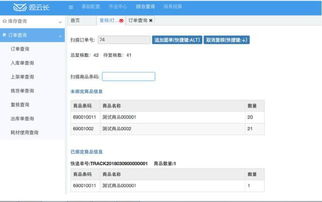
OMS and EMS: A Comprehensive Guide
Understanding the intricacies of OMS (Order Management System) and EMS (Execution Management System) is crucial for anyone involved in the financial or energy sectors. These systems play a pivotal role in managing orders, executing trades, and optimizing energy usage. Let’s delve into the details of each system and explore their functionalities.
Order Management System (OMS)

OMS is a tool designed to manage positions, create orders in various ways, and perform compliance checks to ensure users receive constraints during order creation. In the realm of trade management, OMS provides trade portfolios, trade instructions, FIX connections to execution targets, algorithmic trading options, account allocation, and end-of-day alerts from brokers and dealers.
| Functionality | Description |
|---|---|
| Trade Portfolios | OMS allows users to view and manage their trade portfolios, including positions, assets, and performance metrics. |
| Trade Instructions | Users can create and manage trade instructions, specifying the type of trade, quantity, and price. |
| FIX Connections | OMS provides FIX connections to execution targets, enabling users to execute trades directly through the system. |
| Algorithmic Trading Options | OMS supports algorithmic trading, allowing users to automate their trading strategies. |
| Account Allocation | OMS helps users allocate trades across various accounts, ensuring compliance with regulatory requirements. |
| End-of-Day Alerts | OMS sends alerts to users at the end of the trading day, providing updates on their portfolios and trades. |
Execution Management System (EMS)

EMS is a system designed for execution and customization, focusing on speed, volume, and data analysis. This software is not concerned with creating and maintaining asset portfolio models and balanced accounts. If you are an active trader, hedge fund, or long-term asset manager who is concerned about achieving the best price for large orders rather than the distribution of a series of accounts, then EMS is the right system for you. EMS also provides real-time price quotes and has the ability to execute advanced transactions across brokers. One unique feature of EMS is its ability to provide traders with the ability to customize specific trading algorithms. If you want to execute a portion of a trade group for price discovery and then execute the remaining trades, then EMS is what you need.
| Functionality | Description |
|---|---|
| Real-Time Price Quotes | EMS provides real-time price quotes, allowing traders to make informed decisions. |
| Advanced Trading Capabilities | EMS enables traders to execute advanced transactions, such as DMA (direct market access) and partial trade execution. |
| Customizable Trading Algorithms | EMS allows traders to customize specific trading algorithms to suit their needs. |
Energy Management System (EMS)

EMS is a software and hardware collection used for monitoring, controlling, analyzing, and optimizing energy systems. It provides real-time monitoring and intelligent control of all aspects of energy production, distribution, and consumption, achieving efficient energy management and optimized configuration. In the context of energy storage systems, EMS refers to the system used to manage energy storage devices, including battery management systems (BMS), energy storage inverters (PCS), and other sub-systems that communicate with energy storage devices. The core function of EMS is to optimize the scheduling strategy of energy storage devices to ensure their safe, stable, and efficient operation. This includes battery charging and discharging control, state monitoring, fault diagnosis, performance evaluation, and more.
| Functionality | Description |
|---|---|
| Monitoring and Control | EMS can monitor the operating status of
Related Stories |



